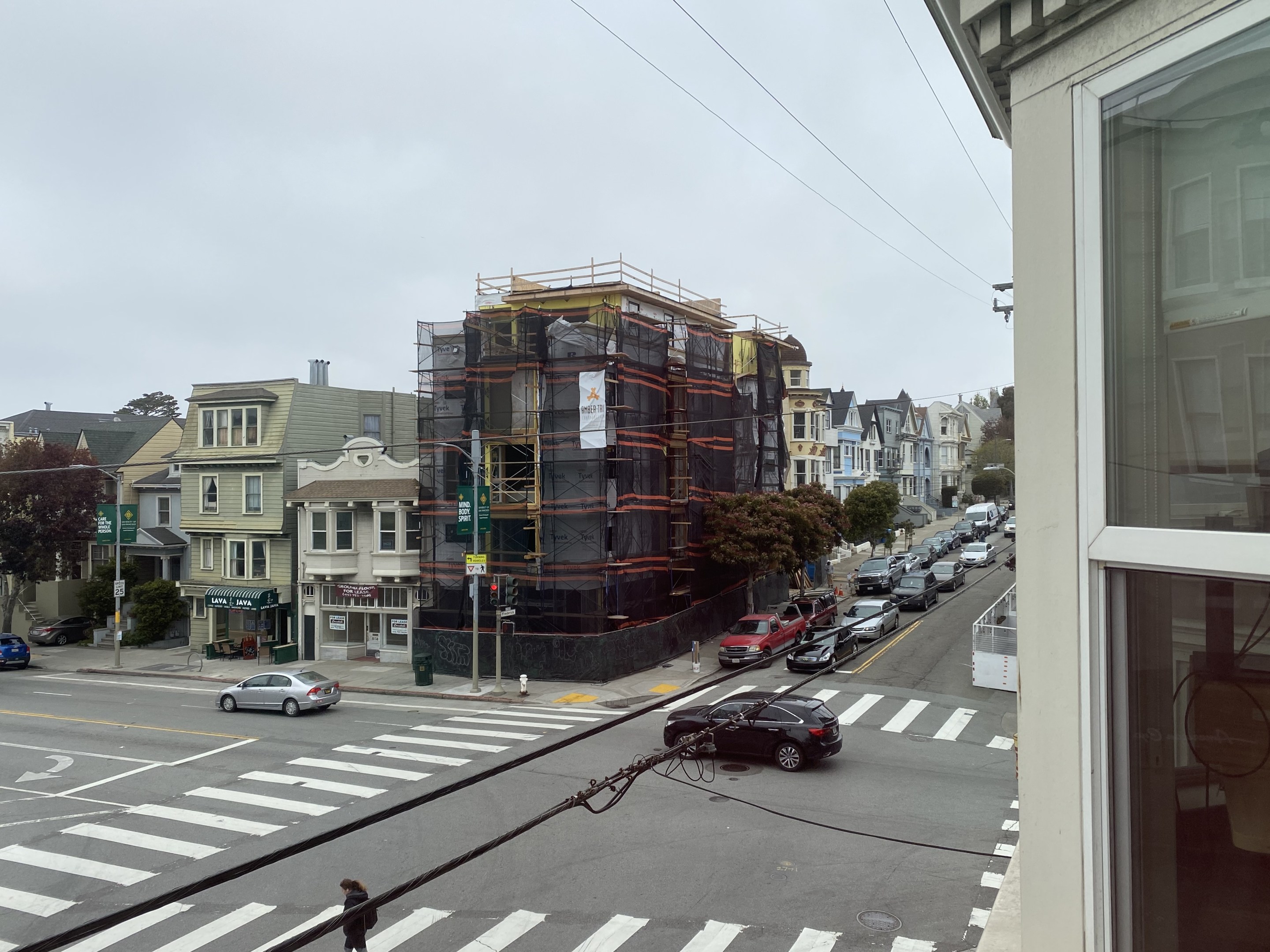I live in San Francisco at the intersection of Frederick and Stanyan Streets, across from a site where three residential units are being added on top of an existing one-story retail space. I am thrilled to see this sort of construction in my neighborhood. Because housing is a basic human right, our city’s policies should have the explicit goal of making it both abundant and inexpensive. Fortunately, the two go hand in hand: There is a well-established scientific consensus that increasing the supply of housing helps keep housing prices down. And not only is welcoming more neighbors to our community the right thing to do from a human rights standpoint, it is also the right thing for our city’s economy.
Having more people in a neighborhood means more potential customers, especially foot traffic, for local businesses. And as housing becomes cheaper, those customers will have more disposable income to spend. More neighbors can support a greater number and greater diversity of businesses, restaurants, and experiences, and therefore a more enriching life, for everyone in the city, putting more things in walking distance for more people, and creating more jobs interspersed throughout the primarily-residential western half of the city. Local businesses will have an easier time hiring and retaining workers, as employees will be able to afford to live nearby. Allowing more multifamily housing especially in the city’s wealthier neighborhoods will help relieve the gentrifying pressure on the vulnerable neighborhoods where — perversely — current zoning laws concentrate the city’s new multifamily construction.
I’ve been heartened to see a lot of attention paid recently to making better use of San Francisco’s space to accommodate everyone who wants to live here. Already-built vacant units have received much scrutiny, but we shouldn’t be myopic: unbuilt units are vacant too. Unfortunately, current zoning laws that ban everything but single-family houses enforce that much of our city’s potential housing stock will remain unbuilt and permanently vacant, while simultaneously codifying the shameful message that only people who can afford an entire house are worthy of being our neighbors. We need zoning changes to legalize multifamily housing citywide.
Promoting walkability and bikeability will be essential to accommodating growth without intensifying car traffic. We need to make it convenient to live without a car, so it's important for upzoning to go hand-in-hand with abolishing minimum parking requirements and building out a network of bus-only lanes and protected bike lanes. This will have the added benefit of making the city welcoming to neighbors who can’t afford a car.
Some opponents of upzoning contend that, even after a significant drop in prices, market-rate housing will still be out of reach to many people who want to live here. They’re right, and that’s why it’s important to expand our social housing programs. But this is certainly not an argument against upzoning. On the contrary, it’s an argument for yet more ambitious upzoning. If you have a long distance to travel, you don’t refuse to budge on the grounds that you’ll still be far after the first few steps; you continue making progress until your destination is reached. Similarly we should allow housing to be built as long as someone is willing to build it.
Current homeowners who have the bulk of their wealth tied up in their home needn’t worry that upzoning will hurt their investment. While the price of individual units will fall, the value of upzoned land itself may in fact go up as the true potential of the land to house more neighbors is unlocked. Upzoning may even help retirees stay in their homes longer by allowing them to collect rental income from additional units on their lot.
For those properties that do turn over, the assessed tax rate will reset to the current market price, allowing the city to collect more revenue to fund services like schools, affordable housing programs, and transit.
The project at my own corner provides a beautiful case study. There will soon be three more families that can walk to our local businesses. I’m excited to welcome my new neighbors, and for this sort of infill to be replicated on every lot across the city.
***
Jonah Mann lives and works in San Francisco, and thinks more people should have that opportunity too. He is a member of SF YIMBY.






